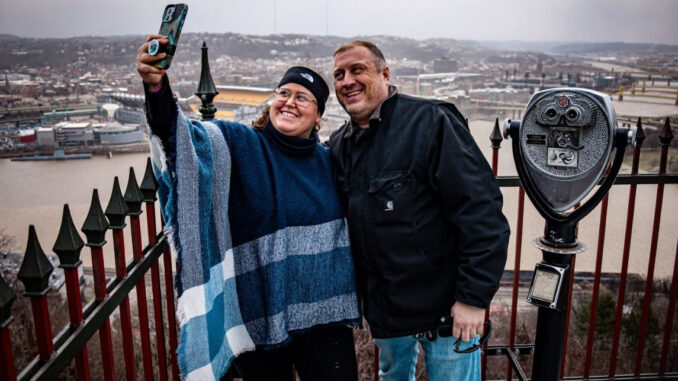
Naomi Girson | Staff Writer
Staple tourist attraction and means of transportation, the Monongahela Incline continues to be shut down, after Pittsburgh Regional Transit (PRT) announced on Jan. 12, on X, formerly known as Twitter, that the incline will remain out of service through at least the next two weeks.
The incline, operating for over 150 years, first shut down on Jan. 3, following malfunctions preventing the cars from slowing down enough to stop at their positions at the upper and lower stations. PRT announced multiple electrical and mechanical components had failed.
“While we cherish the opportunity to be entrusted with its upkeep, we are often tested by the difficulty of keeping such a prominent icon in operation,” said Katharine Kelleman, PRT CEO, in a Jan. 12, news release.
Originally, when inclines were introduced to Pittsburgh, there were a total of 147 around the city. The demand for them diminished over time, and now, the Duquesne Incline and the Monongahela Incline are the last functioning inclines in Pittsburgh.
The Monongahela Incline was built in 1870, by John J. Endres, a German engineer specially selected to build it according to the official Monongahela Incline website, The Incline, when in working condition, runs up and down Mt. Washington. Due to the frequency of riders working in the coal mines all over the city the mountain was previously called Coal Hill.
Tour guide George DeBolt frequents the Inclines in Pittsburgh. He said there are some differences between the two. The main difference is that the Duquesne Incline is privately funded by a non-profit organization, whereas the Monongahela Incline is run by PRT. It is just a business, and from that comes more problems fundamentally for the Monongahela Incline.
“Where the Monongahela Incline is a ride, its transportation, the Duquesne Incline is an experience,” DeBolt said.
Lots of people come from out of town to visit Pittsburgh, and at least one of the inclines is on almost everyone’s trip.
The original purpose of the incline was to better assist all the steelworkers in traveling up and down the hill. Today the Monongahela Incline is still used as public transportation for Pittsburghers who use the incline as a part of their daily commute and tourists who want to see the upper and lower level of the city efficiently.
Domenica Rifenburgh, an employee at the front desk at the Duquesne Incline noted some present-day uses of the inclines.
“It’s solid transportation because people use it even if they go to a football game or a hockey game. They like to go on the incline because it gives them a nice view of the city at night or during the day,” Rifenburgh said.
The past three years, Rifenburgh has heard of ongoing issues with the Monongahela Incline three separate times.
The reason for this all comes down to the maintenance of the cars. The Duquesne Incline is older than the Monongahela Incline but is still in better condition, with authentic cars from beginning “Our inclines are so close and they have been here for almost the same amount of time, but ours is older, they have changed their cars at least two or three times,” Rifenburgh said.
The current repair is being conducted under Elcon Technologies’, a subcontractor of Westmoreland Electric, original 2022 Monongahela Incline Rehabilitation Project contract according to the PRT website.
While construction contiues, city locals who rely on the Monongahela Incline will continue to be provided with shuttle buses as a transportation replacement between the upper and lower stations until service is restored.

